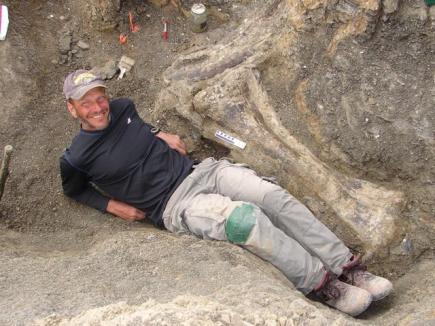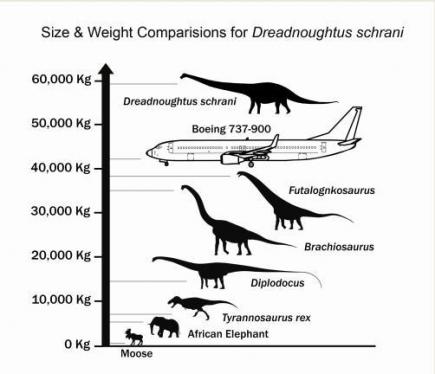A colossal new species of dinosaur which would have weighed more than a Boeing 737 and was the length of three buses has been discovered by a team from Manchester University.
The remnants of the supermassive specimen, named Dreadnoughtus schrani, were excavated in the Southern Patagonia region of Argentina.
Scientists have suggested that this long-extinct creature was approximately 26 metres in length and could have weighed up to 59.3 metric tonnes.
And they also believe it is the most complete skeleton of a gigantic titanosaurian sauropod ever discovered.
Dr Victoria Egerton, a member of the team from Manchester University enthused: “This is an incredible discovery because it is pushing the boundary of size, in terms of both mass and length, we expect terrestrial animals can achieve.
“Animals such as this help us to further understand ecosystems of the past.”

LEG-ENDARY FIND: One of many bones discovered by Manchester University scientists (© Kenneth Lacovara)
Scientists have also noted that this particular creature’s bone histology indicate that it was still growing at the time of it’s death.
The Dreadnoughtus is part of the ‘titanosaurian sauropod’ family, which roamed the Earth around 66–100 million years ago during the Late Cretaceous period.
The near perfectly preserved skeletal fragments, which make up 45.3% of the bones, means it is one the most complete and intact of any Titanosaurian found to date.
Nearly all research from giant titanosaurs had been known only from very incomplete fossils, which has hindered the understanding of their anatomy as the shape and dimensions of their bodies are based on estimates from a limited sample of bones.

TITANIC BATTLE: The dinosaur would have weighed more than a passenger jet (© Kenneth Lacovara)
Speaking to The Huffington Post, the author of the research Dr Kenneth Lacovara, said: “It is by far the best example we have of any of the most giant creatures to ever walk the planet.
“With a body the size of a house, the weight of a herd of elephants, and a weaponized tail, Dreadnoughtus would have feared nothing.”
Image courtesy of Mark A. Klingler, Carnegie Museum of Natural History, with thanks



